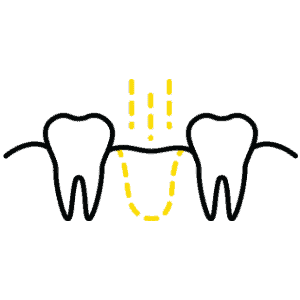
Bone Grafting
Improving Quality And Quantity Of Bone For Dental Implants
About Bone Grafting
Over a period of time, the jawbone associated with missing teeth atrophies or is reabsorbed. This often leaves a condition in which there is poor quality and quantity of bone suitable for placement of dental implants.
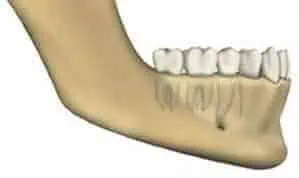
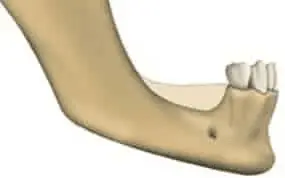
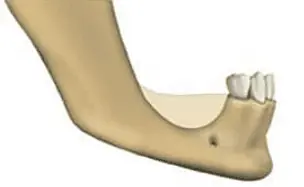
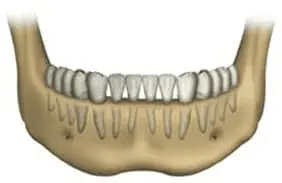
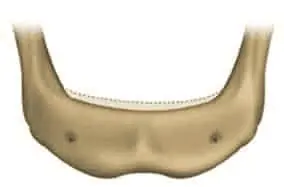
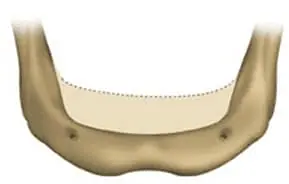

Above: Side view of bone resorption.
Over a period of time, the jawbone associated with missing teeth atrophies or is reabsorbed. This often leaves a condition in which there is poor quality and quantity of bone suitable for placement of dental implants.

Above: Frontal view of bone resorption.
In these situations, most patients are not candidates for placement of dental implants. Today, however, we have the ability to grow bone where needed. This not only gives us the opportunity to place implants of proper length and width, it also gives us a chance to restore functionality and esthetic appearance.
Bone Grafts: What You Need to Know
How Does Resorption Occur?
Resorption is the break down or dissolving of a hard structure, such as bone.
The progression of bone resorption:
Bone resorption is a natural process that begins immediately after the removal of a tooth (or teeth).
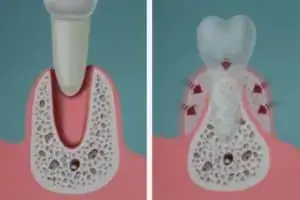
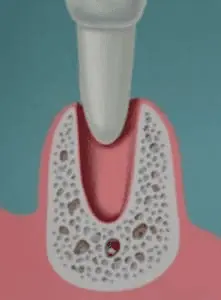
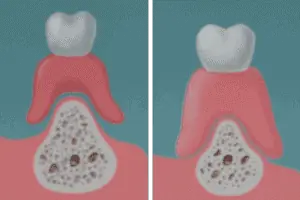
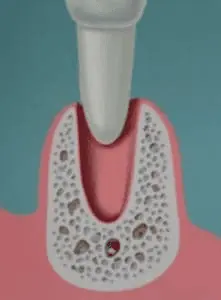
Types of Bone Grafting
Sometimes periodontal disease, accidents or badly fit dentures can cause the bone surrounding your teeth to wear down or decay. Your dentist may recommend a bone graft to replace this bone as part of the procedure for implanting new teeth. There are several types of bone grafts that your dentist may recommend for you.
Types of Bone Graft materials
Autogenous – this type of bone graft is performed by using bone taken from another part of your body. This is the most preferred method because there is no problems with rejection.
Allograft – this type of graft is performed using bone taken from a tissue bank. It is human bone saved and kept for surgical grafting.
Barrier membrane – Gum tissue grows much faster than bone. Sometimes it is necessary to place a special membrane under the gum to prevent gum tissue from growing into the graft site. Over time this special barrier membrane will dissolve with no need for follow up visits to remove it.
Our surgeons will recommend bone grafts if your case requires them. The type of bone graft that will work best in your case depends on the results of your examination. We will discuss all of the options available to you to help you to decide which type of graft to use. Most dental professionals prefer using live bone taken from the patient because it heals much faster and has little risk of rejection.
Sinus Lift
There are four sets of hollow spaces inside your skull called the paranasal sinuses. Their primary function is to create a mucus substance that protects your nasal passages from dust and harmful pollutants. The largest of these, your maxillary sinuses are positioned in your cheeks right above the upper jaw. Sometimes your dentist will recommend a sinus lifting as part of the procedure to attach dental implants in your upper jaw.
Why Would I Need A Graft or Lift?
The layer of bone separating your sinuses from your upper jaw is thin and the roots of your upper teeth sometimes grow up through that and into you maxillary sinus cavities. Placing a dental implant is difficult if the bone layer is too thin to hold it in place. In that situation, our surgeons will recommend a sinus lift graft.
Sinus Augmentation
The procedure for sinus lift and dental implantation will take place in two stages. In the first stage of the process, our surgeons will lift up the sinus membrane, going through areas where your old teeth were. Then he will insert donor bone tissue into the sinus floor to strengthen it. After a sufficient time has gone by for the grafts to heal, the doctor will place the implants in your upper jaw and attach your new teeth.
Not every patient will require sinus bone lifts to get dental implants. Often there is enough bone mass in your jaw to place implants without them. However, improved bone graft technology allows almost anyone to receive dental implants, whereas before, those same patients would not be candidates.
Ridge Expansion
When teeth in the upper jaw are removed it can sometimes cause the bone that supports them to deteriorate. This bony section, the alveolar ridge, can also become less dense due to aging or dental disease. The reduction of the alveolar ridge may be cause for extra attention before dental implantation procedures can be performed. The ridge may need to be widened or thickened so that there is enough bone mass to support dental implants.
The Process
The surgeon will examine your upper jaw carefully to determine if the alveolar ridge can support your implants. If your case requires augmentation, the first step to gaining your new smile will be augmenting your ridge with bone grafts to strengthen it. Then, after a few months time for healing has passed, you will return to our office to receive your implants and new teeth.
The surgery is performed in our office under sedation. The bone tissue used for the grafts may be your own bone or grafts from a tissue bank. The surgeon will explain the procedure carefully and review all of your options with you before the procedures take place.

